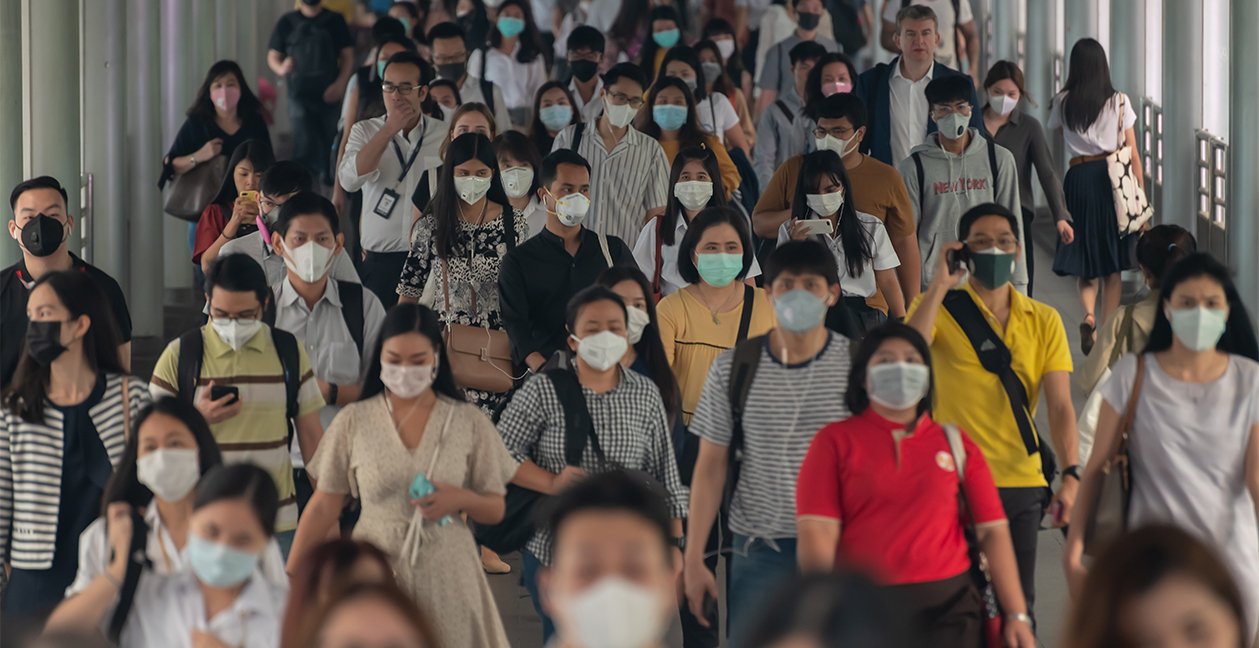As waves of panic related to coronavirus roil the globe and the markets, there is a feeling in the air that “this time it’s different”—that this outbreak could reach truly disastrous proportions, dealing a blow to our economy and investments.
Here, however, is a contrarian view seen from the perch of history.
First of all, the cumulative death toll from all the feared infectious pandemics of the past-quarter century—mad cow disease (1996), SARS (2002), bird flu (2004), swine flu (2009), Ebola (2014), Zika (2016) and the ongoing coronavirus, or COVID-19 (2020)—doesn’t add up to the death toll of a single season of influenza.

What also doesn’t add up, then, is why these fear pandemics keep happening. If you unmask the problem, the diagnosis is different. It’s a classic principal-agent problem, in which one decision-making entity (the “agent”) has undue influence over another (the “principal”).
For the sake of argument, I am defining public interest as the “principal” here, and “agent” as actors in the system who owe a duty to public interest. The central actors in fear pandemics are attention seekers with something to gain and cover-your-rear-end actors working for the state.
Attention seekers include academics vying for the limelight or media vying for ad revenue. In the race-to-the-bottom market for attention, those who report “data” that doesn’t support the panic narrative will be outcompeted by those who report information, as well as misinformation and mischaracterized information, that supports the panic. This dynamic provides panics with the self-reinforcing feedback loop they need to fuel runaway growth.

Here is an example of mischaracterized information. Comparing the 1-2 peercent so-called case fatality rate of COVID-19 with the widely reported 0.1 percent case fatality rate of the seasonal flu is like comparing apples to orangutans. It’s false equivalence. In the commonly cited case fatality rate of seasonal flu, the denominator includes presumed mild cases that didn’t seek medical attention. In the COVID-19 case fatality rate, the denominator excludes unconfirmed mild cases who didn’t seek medical attention (this number is unknown)—inflating the true fatality rate of the infection. That said, the fact that the report of the first 425 confirmed cases contained no one under the age of 15 is illustrative of this bias: there are likely vast numbers of untested children with COVID-19 who have had mild symptoms but are unaccounted for in the inflated case fatality rate.
Nonetheless, don’t count on state actors to put the brakes on such runaway panics. No doubt, the containment policies help contain the virus—that’s not the concern here. The concern is that the principal agent problem distorts the degree of response. All too often, the modus operandi of state actors is to keep their jobs, which means to keep their rear ends adequately insured. Like the weatherman, you are far more likely to be forgiven for over-calling potentially bad outcomes than the other way around. Watching the CDC downsize case numbers as a fear pandemic fades is not unlike watching the percentage chance of rain be downgraded as the actual hour approaches. There is clemency for errors of inclemency.
It’s important to note that attention seekers and state actors are merely agents doing what they do best: acting according to their enlightened self-interests. While disappointing for conspiracy buffs, a modern dystopian non-fictional story about a fictional pandemic doesn’t require an evil foil. It merely requires natural inclinations, free markets and free will.
What’s left, then, is the third important actor in fear pandemics: the public. In all panics throughout history, the public has done what it often does, which is to become histrionic. Whether burning accused witches at the stake or running banks into the ground, afraid humans can turn into a mob, ready to set aside their common sense, join the herd and serve as vectors for the panic. You can’t blame them. In the evolutionary wild, if all the wildebeests around you were freaking out and you didn’t freak out, guess who got eaten.
Due to evolutionary dislocation, we now have a maladaptation of the principal agent relationship: We no longer live in kin tribes with mutually vested kin skin in the game to deter self-dealing. Today, even if a panic is not worthy of itself, agents in the system can profit (or avoid losses) by playing along with the exaggerated version of the news. Playing along is also an evolutionary survival instinct, and such betrayal is far more likely when loyalty among members of a community is no longer ensured by mutual kin skin in the game.
None of this was bound to get better with the advent of the internet a quarter century ago. The internet increased information liquidity—not its fidelity. The internet not only doesn’t solve the modern day principal agent problem, but it also gives the central problem more momentum by connecting more actors to more principals.
Social media has further turbocharged the virality of misinformation. Most of what is flowing through the ether today is noise masquerading as information, but such misinformation can travel faster and with greater endorsement—even if unwarranted—when it flows through the fiber of human trust. The rise of fear pandemics is just one of the many consequences to expect when technology amplifies the tendency of agents to violate the trust of their principals.
Thankfully, COVID-19 appears to be roughly tracking the flu season, which means that the panic likely has only so much room left to run before being awkwardly ushered towards the back alley of history. While the panic is red hot right now, however, it’s an opportune time to observe the principal agent problem at work in the information economy. Unless we find a way to solve this central problem, humanity may be doomed to repeat this economy-crushing doomsday scenario every two to five years.







